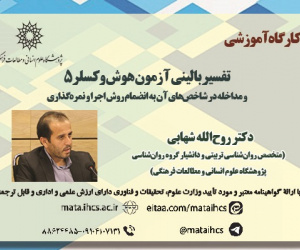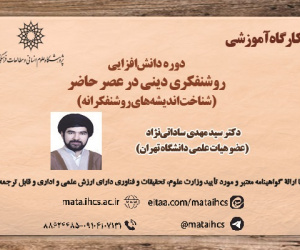نگاهی انتقادی به کتاب «الفصوص فی علم النحو و تطبیق قواعده علی النصوص»
آرشیو
چکیده
در حوزه علمیه خواهران کتاب درسی نحوی «الفصوص فی علم النحو» در دو حلقه در حال نگارش است. حلقه اول آن منتشر شده و قرار است در سال تحصیلی 1403-1404 در سطح 2 به عنوان اولین کتاب درسی نحوی برای نحوآموزان مبتدی تدریس شود. برای این کتاب سه هدفِ آشنایی طلاب با زبان تراث کهن شیعه و فهم آن؛ کاستن از جمود و خشکی قواعد و، درک و فهم بهتر قواعد با مثال های عینی تعریف شده است. اما ساختار و محتوای این کتاب سبب شده این سه هدف در نگارش آن محقق نشود. از اشکالات ساختاری این کتاب این است که هر درسی با متن داستانی طولانی آغاز می شود و حاوی لغات سخت و قواعد نحوی ناآشنا برای نحو آموز مبتدی فارسی زبان است. این نحو آموز که مقدمات قرائت و درک متن را نیاموخته است، باید قبل از فراگیری قاعده نحوی هر درس، متن داستانی آن درس را قرائت کند و ترجمه و محتوای آن را فرابگیرد و به تمریناتی که درباره محتوای متن است، پاسخ دهد. یعنی نویسنده کتاب در آموزش قواعد نحوی به نحو آموز مبتدی فارسی زبان، فراگیری قرائت صحیح متن و، فهم و ترجمه آن و تسلط بر محتوای متن داستانی هر درس را بر آموزش قواعد نحوی آن که مقدم بر قرائت و فهم متن است مقدم ساخته است. از اشکالات محتوایی این کتاب عدم ذکر برخی از مباحث مقدماتی و قواعد نحوی اساسی و پر کاربرد است. برای نمونه، در این کتاب از اسم، فعل و حرف سخن به میان نیامده است و از احکام آنها، فقط به «اعراب» اشاره شده و از «بناء» و «معرفه و نکره» سخن گفته نشده است. به مصدر مؤول به سبب نپرداختن به موصول اشاره نشده است. از مجزومات و بالطبع از ادوات شرط و جمله و جواب شرط بحث نشده است.A Critical Review of the Book Al-Fuṣūṣ fi 'Ilm al-Naḥw wa Taṭbīq Qawā'idihi 'ala al-Nuṣūṣ
The book Al-Fuṣūṣ fi 'Ilm al-Naḥw wa Taṭbīq Qawā'idihi 'ala al-Nuṣūṣ is a grammar textbook currently being written in two parts for the seminaries dedicated to female students. The first part has already been published and is set to be taught at Level 2 as the introductory grammar textbook for beginners in the academic year 2024-2025. The book aims to achieve three main objectives: familiarizing students with the language of the classical Shia heritage and its comprehension, reducing the rigidity of Arabic grammar rules, and enhancing the understanding of these rules through practical examples. However, the book’s structure and content have hindered the achievement of these goals. One of the structural issues of this book is that each lesson begins with an extended narrative text containing difficult vocabulary and unfamiliar grammatical rules for Persian-speaking beginners. These novice learners, who have not yet mastered reading and comprehending texts, are required to read, translate, and grasp the content of these stories before learning the corresponding grammatical rules. Additionally, they must complete exercises related to the text's content. This approach prioritizes reading, understanding, and mastering the content of the narrative text over teaching the grammar rules, which should logically precede text comprehension. From a content perspective, the book omits several introductory topics and essential, widely-used grammatical rules. For instance, it does not cover the basic concepts of nouns, verbs, and particles. Among the rules, it only discusses I'rāb (inflection) but neglects Binā (fixed forms) and concepts like definiteness and indefiniteness (ma'rifah and nakirah). Furthermore, the book fails to address the masdar mu'awwal (verbal noun) due to the absence of coverage on relative pronouns (mawsul). Additionally, it lacks discussions on grammatical exceptions such as majzūmāt (verbs that take the jussive case), conditional tools, conditional sentences, and their responses.







